Makes and Models
What Is and Isn’t Inside an EV?
What is an EV? What are the obvious things that set an EV apart from the more conventional car that’s powered by an internal combustion engine (ICE)? And what is an EV like to maintain?
These are just a few of the good questions that might be rattling around in your mind as you consider the possibility of EV ownership. Let’s face it, most of us probably jump inside our cars and give little thought to what happens inside a car when we drive off.
Let’s start by answering the first question and develop for ourselves an understanding of what an EV is.
The letters ‘EV’ stands for the words ‘electric vehicle’. EVs don’t have a combustion engine underneath the bonnet, in fact they don’t have a combustion engine at all. This means that you won’t need to pull over at the gas station to fill your car up with any form of fossil fuel (e.g., unleaded gasoline (91), premium unleaded gasoline (95, 98 or 100 octane) or diesel. Neither will your car be running on gas (LPG or CNG). You won’t even have to top your car up with engine coolant or oil for engine lubrication. Sounds good!
Once you look away from the various processes of mining earth metals like lithium and cobalt (a by-product of nickel and copper mines); neodymium, terbium, or dysprosium (critical metals used in higher powered batteries that can last for longer distances – and everyone wants to be able to last longer) used in EV batteries and electronic componentry, EVs look to be more environmentally friendly and interesting cars to own and drive.
All your power is electronically accessible to your accelerator pedal, and your braking action is processed electronically as well. When you brake or decelerate, battery power can be reverted back into the battery pack. Basically, drain the battery in an EV, and you’ll need to plug it into a charging port again before you can get some power for driving about again. However, that’s nothing new now, is it?
To get power from your house power supply, you’ll need to have a conversion kit built into your home’s power system in order to be able to power up your EV within a suitable time frame, commonly 6 to 10 hours. More expensive options are available that will enable a quicker charging time. To get power after commuting around the city, you’re going to require a charging station or a park at work that has a convenient and vacant plug-in port for you to charge your vehicle up again to get home. There are some other charging stations (and we’ll need many more of these with more EVs running on the road) where you can park up for a couple of hours to recharge or top-up again for your commute home. If you drive your EV out of town and into the country, you’ll need to be sure that you have enough power between charging ports, because, unlike in a vehicle with a combustion engine, a jerry can won’t get you out of trouble nor will the longest power cord. I’m not sure what serious Outback off-roading enthusiasts will do if they drive an EV. Neither am I sure what mobile ‘tradies’ will do when they get caught short on power between towns.
What is missing inside an EV that you have in a common ICE vehicle?
Noise is the first thing that comes to mind. EVs do without the mechanical noise of the combustion/explosions that takes place inside a working ICE. What you do get is a very quiet ride with a bit of road noise from the tyres and wind about the bodywork as it slips through the air. Exhaust emissions are also a non-event.
EVs have no complex clutch or gearing, which means that EVs can accelerate smoothly and quickly, giving you the feeling that you’re driving a sports car. Instant maximum torque is always accessible.
A purely electric EV has fewer moving parts. There are only around about 20 moving parts in an electric motor, compared with nearly 2000 mechanical components in an ICE. The result is that an EV will need less fiddly routine maintenance jobs like changing the engine oil every 10,000km. You’ll still need to change the tyres on an EV, and you may go through more tyres because of all that instant torque and acceleration. A pricier tyre made up of a softer compound might also be necessary in order for you to be able to stick to the road better with the EV’s instant and quick acceleration.
You will also need to replace the battery pack, as they do have a life. This will be the one expensive maintenance bill. Buy a new EV, and you’ll be able to put this off for 10 years or so. Buy a second-hand EV, and who knows how long you’ll have before the battery pack will need replacing or you just won’t be going anywhere.
An EV owner will likely also need to pay some sort of road user charge or tax in the not-too-distant future, particularly if more EVs take to our roads.
However, own an EV and you won’t need an ICE tune-up or oil change, and the engine coolant won’t need to be replaced, either. In essence, an EV has no petrol, diesel or oil. It has no exhaust, no clutch or gears. It doesn’t have spark plugs, and it has no throbbing combustion noise that you find you get with a V8, a boxer or even a straight six.
As with any car, EVs have both their advantages and their disadvantages. At this stage, an affordable EV would be a great and enjoyable car for the city environment.
Most Reliable Cars in 2021
How reliable a car is directly correlates with our ownership satisfaction rating, right? So, if we own a car that is always needing something fixed or repaired to make it properly functional, our contentment levels will be lower than if our car was reliable all or at least most of the time. It won’t take long for an unreliable car to start to irk us. Reliability is always a black and white area when it comes to car ownership satisfaction.
What car? has recently published their survey findings for 2021. They questioned more than 16,000 people across the UK who owned a car no older than 5 years old, and this is the results that show which cars and brands are the most reliable, and which ones are not. Is it possible that the more reliable a car is, the more green and sustainable the car is?
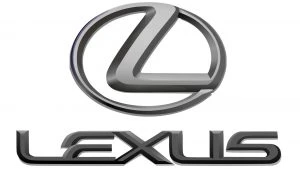
First place goes to Lexus who claims the top spot as the most dependable brand of car you can buy. Lexus cars suffer from very few faults. The Lexus NX SUV is the highest-rated hybrid you can buy.

Second place brand is Dacia, which is considered to be a budget brand. Here is a prime example of reliability and low cost going hand in hand. Dacia’s star performer is the previous generation Dacia Sandero.
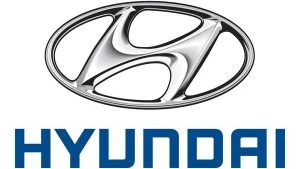
Hyundai takes the bronze, where the previous generation Hyundai i10, the larger i20, and the current Hyundai i30 being standouts. It was revealed that the problem areas included the brakes and gearbox, however the brand’s 5-year unlimited km warranty meant that most problems were fixed for free.
Suzuki
Suzuki takes fourth place for brand reliability; an excellent result. The little Suzuki Swift is the third most reliable car – a star performer for Suzuki.
Mini
Mini cars are generally pretty reliable cars. Mini’s Countryman scored well in the small SUV class. Mini’s little Hatchback is the sixth most reliable small car overall – a great result.
Toyota
Toyota has long been an impressively reliable brand, though it’s slipped slightly from third place last year.
Mitsubishi
Mitsubishi ranked 7th, their place unchanged from last year. The Mitsubishi Eclipse Cross is the most reliable family SUV on the market, boasting a 100% reliability score!
Mazda
Eighth place goes to the Mazda brand. Mazda highlights include the CX-3 (a very reliable small SUV), the CX-5 (petrol version), and the MX-5 sports car.
Kia
Star performers for Kia are the XCeed and Ceed family cars, which are among the most reliable in their class, while the Kia Optima is the second-most reliable executive car. Kia’s affordable E-Niro is the third most reliable EV.
MG
MG is the brand that takes out 10th spot. The classy MG ZS EV is the second-most reliable EV in the survey.
11) Citroen – Citroen’s C3 Aircross is the third most reliable small SUV.
12) Skoda – Skoda’s Superb is the most reliable executive car.
13) BMW – BMW’s previous model 1 Series is the most reliable family car. The BMW 5 Series is the most reliable luxury car. The BMW 3 Series also ranks 3rd in the executive class. Current BMW Hybrids are not quite so reliable.
14) Honda – The previous model Jazz was fifth in its class, while the HR-V is the most reliable small SUV.
15) Tesla – the Tesla Model 3 ranked 5th in the EV class.
16) Renault
17) Seat
18) Audi – Audi’s TT is the number one sports car for reliability.
19) Volvo
20) Volkswagen
Jaguar, Mercedes Benz, Peugeot, Vauxhall, Porsche, Alfa Romeo, Ford, Nissan, Land Rover, and then Fiat takes out 30th spot.
Of the last 10:
Porshce’s Macan took 1st place for the luxury SUV class.
Nissan’s LEAF is 1st for the most reliable EV.
Honda’s Latest

As with many other automotive manufacturers, Honda is on the hunt for having its fleet become fully electrified. Honda’s vision is to have 100% of its new vehicles with zero emissions by 2040. There are some neat EV models in the pipeline, but also some vehicles that help transition the gap from petrol to hybrid to 100% electric. Honda’s 2022 Civic models are set to be enjoyable.
Honda recently announced that their Prologue SUV, which will be Honda’s first new EV sold in big volume, will be a battery-electric vehicle (BEV) that will go on sale in 2024. It is likely that the Prologue SUV will be an American-only seller first, so how that fits in with Australia remains to be seen. As EV infrastructure expands, and customer interest grows nationwide and globally, the company will expand sales and marketing efforts accordingly. Following the launch of the Honda Prologue, the company will create additional EVs based on the new e-Architecture that is currently being developed and customer demand.
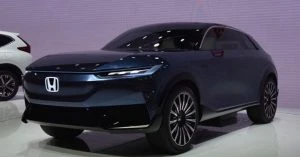
Honda Prologue SUV
Honda has a long history of being a leader in creating hybrid and electrified vehicles. Honda’s Insight still is a very good example of how a hybrid should perform, and it remains a strong seller with people who are looking for low emissions and frugality in fuel usage. As Honda prepares for the launch of the Honda Prologue for America, the company will introduce hybrid-electric systems to other core models to continue to reduce CO2 emissions while helping create a bridge for customers to move from fossil fuels to hybrid to EVs.
Honda’s management have stated that they are aware that customers who have a good experience with a hybrid vehicle are more likely to buy an electric vehicle in the future. We can see that their hybrid sales have increased over the last few years. Led by models such as the CR-V Hybrid and the Accord Hybrid, Honda just recorded its best-ever first-half year of electrified vehicle sales. The Insight has also sold well.
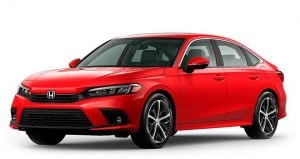
2022 Honda Civic Sedan
Now what about now? Let’s take a look at the all-new Honda Civic Hatchback! In 2022, Honda will be selling the latest Civic in Australia. The car is aimed predominantly at young buyers who are captured by its fastback design and sporty driving character. The new Civic will offer a slick-shifting 6-speed manual transmission as well as an automatic CVT option to go with the 2.0-liter normally aspirated motor or the 1.5-liter turbo engine. High-performance Si and Type R models are to be available, and they are cars I’ll be keeping my eyes out for.
The largest back seat to ever be inside a Civic Hatchback comes with 2022 models, and the cars also features new standards of safety technologies. All 2022 Honda Civic Hatchbacks include Honda’s new next-gen driver and front passenger airbags and an expanded Honda Sensing suite of driver-assistive and safety technology that adds Traffic Jam Assist and a smoother, more natural feeling to functions like Adaptive Cruise Control (ACC) and the Lane Keeping Assist System (LKAS). It will also include Collision Mitigation Braking System (CMBS) with Pedestrian Detection, Forward Collision Warning, and Road Departure Mitigation (RDM).
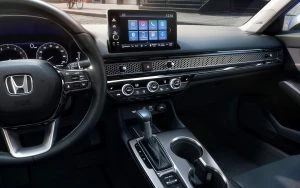
2022 Honda Civic Dash
2022 Honda Civic EX-L models will boast all the luxury features, so big color touchscreen with Apple CarPlay and Android Auto integration, push-button start, partial digital instrumentation, blind-spot information (BSI), leather upholstery, an 8-way power driver’s seat, heated front seats, heated outside mirrors, a one-touch power sliding moonroof, dual-zone automatic climate control and LED headlights are the go.
Sportier Civics will have racy looks thanks to things like a short shifting 6-speed manual transmission (or CVT), Berlina Black 18-inch wheels, low-profile 235/40R-18 tyres, black exterior accents, an 8-speaker audio system, sport-specific upholstery, a leather-wrapped shifter and steering wheel, paddle shifters (CVT only) and sport pedals.
As the automaker prepares for the launch of the Prologue SUV in America, expect to see more hybrid variants of current core models to ease the transition to full electrification.
Ford Movements
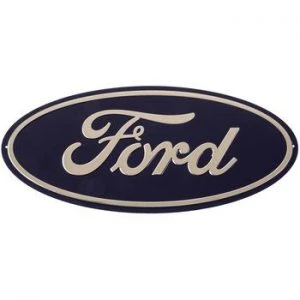
Hot off the Press News has Ford investing big money in EV production. All up, Ford and a South Korean supplier will spend $11.4 billion US on Ford’s EV production and expansion. Ford hopes this spend will enable them to produce more than one million EVs per year in the second half of this decade. The buzz words used in new and future cars include the term electric vehicles or EVs. Established automakers like Ford are racing to try and close the gap on Tesla’s EV lead. As you may be aware, Tesla produces a range of EVs, and Tesla are currently on the way to selling more than 800,000 electric cars this year. Tesla is currently the most valuable automaker in the world, with a market capitalization of nearly $800 billion US. Ford’s market value is $56 billion US.

Ford F-150 Lightening
Ford’s big spend will be its 2nd biggest spend in its history. Under the climate change banner and the Biden government, this latest US multibillion-dollar move to quickly transfer production plants to EV production is seen as a fast track phasing out of gasoline-powered cars and trucks as part of the global push to combat climate change. I won’t debate the science here.
Ford is to build 2 battery plants in Kentucky and 1 in Tennessee under the joint venture with its main battery cell supplier, SK Innovation of South Korea. In addition, Ford will build an assembly plant at the Tennessee location to churn out EV trucks. Ford will invest $7 billion and SK Innovation $4.4 billion, the companies have said. Ford expects electric vehicle models to make up 40% of their vehicle production by 2030. That’s only a little over 8 years away!
Ford’s new truck plant and battery factory in Tennessee is likely to be the place that will produce a new battery-powered Ford F-Series pickup truck, this following the previously announced F-150 Lightning pick up truck. I have to say that the F-150 Lightening is an impressive beast! Ford has said a mix of both the public and businesses had already placed 150,000 reservations for purchasing the F-150 Lightning.
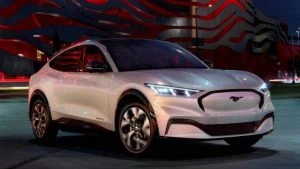
Ford Mustang Mach-E
Also this year, Ford began selling the Mustang Mach-E, which has taken a sizable market share from Tesla. Ford also plans to add an EV delivery van into the mix by the end of the year. Then, in early 2022, the electric F-150 Lightning will roll out of their showrooms and silently onto the tarmac.
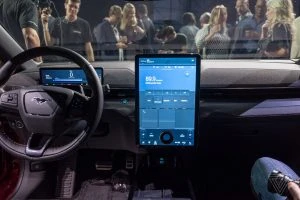
Ford Mustang Mach-E
Mr. Jim Farley, Ford Motor’s president and CEO, has recently said that making electrical vehicles affordable should be among the top priorities for automakers, so that the average vehicle-buyer can purchase one. This is good news, as a new EV is well out of most people’s budget.
He also made a couple of rather poignant comments: one on a key issue on questioning how EV production will impact labour/jobs (a subject rather close to home with our relatively recent Ford and Holden closures), and the other on materials. So, apparently, it costs 30% less to manufacture the Ford electrical vehicles. This will definitely affect production rates and employment long term. Then there is also the issue of battery supply and the rare minerals (i.e., lithium, cobalt) needed to power them, said Farley. Mr Farley stated, “We have to bring battery production here, but the supply chain has to go all the way to the mines. That’s where the real cost is, and people in the U.S. don’t want mining in their neighbourhoods. So, are we going to import lithium and pull cobalt from nation-states that have child labour and all sorts of corruption, or are we going to get serious about mining? … We have to solve these things and we don’t have much time.”
Here in Australia, we haven’t jumped on the EV wagon just yet, and if we are going too, then there is so much infrastructure that will be needed to be implemented before owning an EV becomes a viable option for people like me. Even the thought of the costs involved in getting the right infrastructure is eyewatering, and, like most impatient home renovators and idealistic politicians, the job must be done yesterday! The hard working folk pay for it, of course!
There seems little patience on offer by many governments and climate change activists for making the move to EVs (and other new transportation technology like an EV repower on your existing car) a more balanced and delicate affair. For now, owning an EV is very much for the elite, so Farley is on the right track when he says that the cost of EV ownership must be addressed very quickly.
Ford still has many plants throughout the U.S. However, like other big automotive manufacturers, Ford also has locations right around the world. Ford has many production plants scattered about the globe, and these include assembly plants, engine plants, forging plants, stamping plants and transmission plants. Here, in Australia, Ford still has special engine production and stamping plants.
On a more local note, Ford has a new feature called ‘FordPass’ offered on all their new models sold in Australia. FordPass has a few systems worthy of a mention that include:
Remote Start+, where minutes before leaving, you can start your connected vehicle’s engine from your mobile device in order to heat or cool the cabin using the last known climate control setting.
Vehicle Status, where you can check key variables such as fuel level and your odometer on the FordPass App to help plan your journey.
Remote Lock/Unlock, where, conveniently, you can use your mobile device to make sure the car doors are locked or unlocked without being anywhere near your vehicle. If only it could do that for my house front door!
Vehicle Locator, where you can check your vehicle’s exact location in the FordPass App, which is particularly useful if you share your vehicle with one or more members of your household or if you have forgotten where you parked it. However, if you’ve forgotten where you’ve parked it, then maybe you better get breath tested!
Vehicle Health Alerts, where the FordPass App sends Vehicle Health Alerts directly to your mobile device, pre-empting service needs and general maintenance such as low washer fluid.
Live Traffic, where this feature enhances your SYNC 3 Navigation system by delivering up-to-date traffic updates. This technology allows you to adjust your recommended route based on the traffic conditions, helping you to arrive more relaxed and on time.
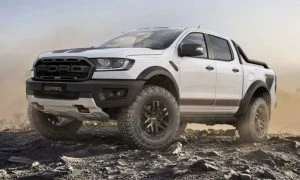
Ford Ranger Special Ediiton
In this second half of 2021, Ford Australia offer a nice broad range of vehicles that include the Puma, Escape and Everest SUVs; the Ford Focus car; the Ford Ranger Ute; the Transit Commercial range that has custom vehicles, vans, buses and cab-chassis models; the Ford Performance range that includes the Fiesta and Focus ST, the Focus ST-3, the Ranger Raptor, the Mustang and Mustang Mach-1; and the Special Edition Rangers and Everests.
It is good to see Ford keeping pace with any EV and hybrid automotive technology and movements; though at what societal and environmental cost? New Ford vehicles are good, and Ford offers a very complete package for all new vehicles in the Ford range. Once you’ve driven a Ford, its not so easy to change out of the brand come new car buying territory.